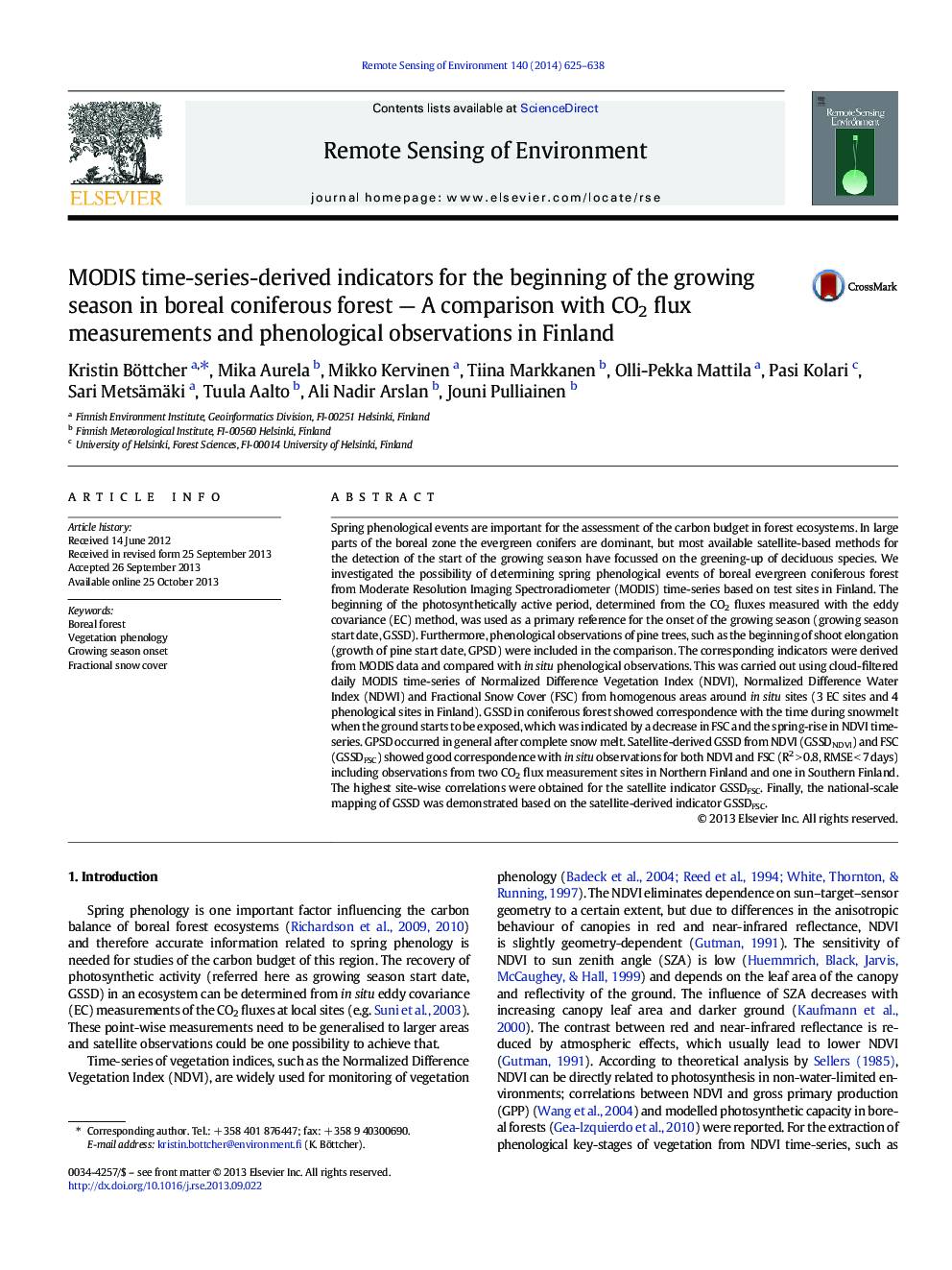| کد مقاله | کد نشریه | سال انتشار | مقاله انگلیسی | نسخه تمام متن |
|---|---|---|---|---|
| 6347076 | 1621260 | 2014 | 14 صفحه PDF | دانلود رایگان |
عنوان انگلیسی مقاله ISI
MODIS time-series-derived indicators for the beginning of the growing season in boreal coniferous forest - A comparison with CO2 flux measurements and phenological observations in Finland
دانلود مقاله + سفارش ترجمه
دانلود مقاله ISI انگلیسی
رایگان برای ایرانیان
کلمات کلیدی
موضوعات مرتبط
مهندسی و علوم پایه
علوم زمین و سیارات
کامپیوتر در علوم زمین
پیش نمایش صفحه اول مقاله

چکیده انگلیسی
Spring phenological events are important for the assessment of the carbon budget in forest ecosystems. In large parts of the boreal zone the evergreen conifers are dominant, but most available satellite-based methods for the detection of the start of the growing season have focussed on the greening-up of deciduous species. We investigated the possibility of determining spring phenological events of boreal evergreen coniferous forest from Moderate Resolution Imaging Spectroradiometer (MODIS) time-series based on test sites in Finland. The beginning of the photosynthetically active period, determined from the CO2 fluxes measured with the eddy covariance (EC) method, was used as a primary reference for the onset of the growing season (growing season start date, GSSD). Furthermore, phenological observations of pine trees, such as the beginning of shoot elongation (growth of pine start date, GPSD) were included in the comparison. The corresponding indicators were derived from MODIS data and compared with in situ phenological observations. This was carried out using cloud-filtered daily MODIS time-series of Normalized Difference Vegetation Index (NDVI), Normalized Difference Water Index (NDWI) and Fractional Snow Cover (FSC) from homogenous areas around in situ sites (3 EC sites and 4 phenological sites in Finland). GSSD in coniferous forest showed correspondence with the time during snowmelt when the ground starts to be exposed, which was indicated by a decrease in FSC and the spring-rise in NDVI time-series. GPSD occurred in general after complete snow melt. Satellite-derived GSSD from NDVI (GSSDNDVI) and FSC (GSSDFSC) showed good correspondence with in situ observations for both NDVI and FSC (R2Â >Â 0.8, RMSEÂ <Â 7Â days) including observations from two CO2 flux measurement sites in Northern Finland and one in Southern Finland. The highest site-wise correlations were obtained for the satellite indicator GSSDFSC. Finally, the national-scale mapping of GSSD was demonstrated based on the satellite-derived indicator GSSDFSC.
ناشر
Database: Elsevier - ScienceDirect (ساینس دایرکت)
Journal: Remote Sensing of Environment - Volume 140, January 2014, Pages 625-638
Journal: Remote Sensing of Environment - Volume 140, January 2014, Pages 625-638
نویسندگان
Kristin Böttcher, Mika Aurela, Mikko Kervinen, Tiina Markkanen, Olli-Pekka Mattila, Pasi Kolari, Sari Metsämäki, Tuula Aalto, Ali Nadir Arslan, Jouni Pulliainen,